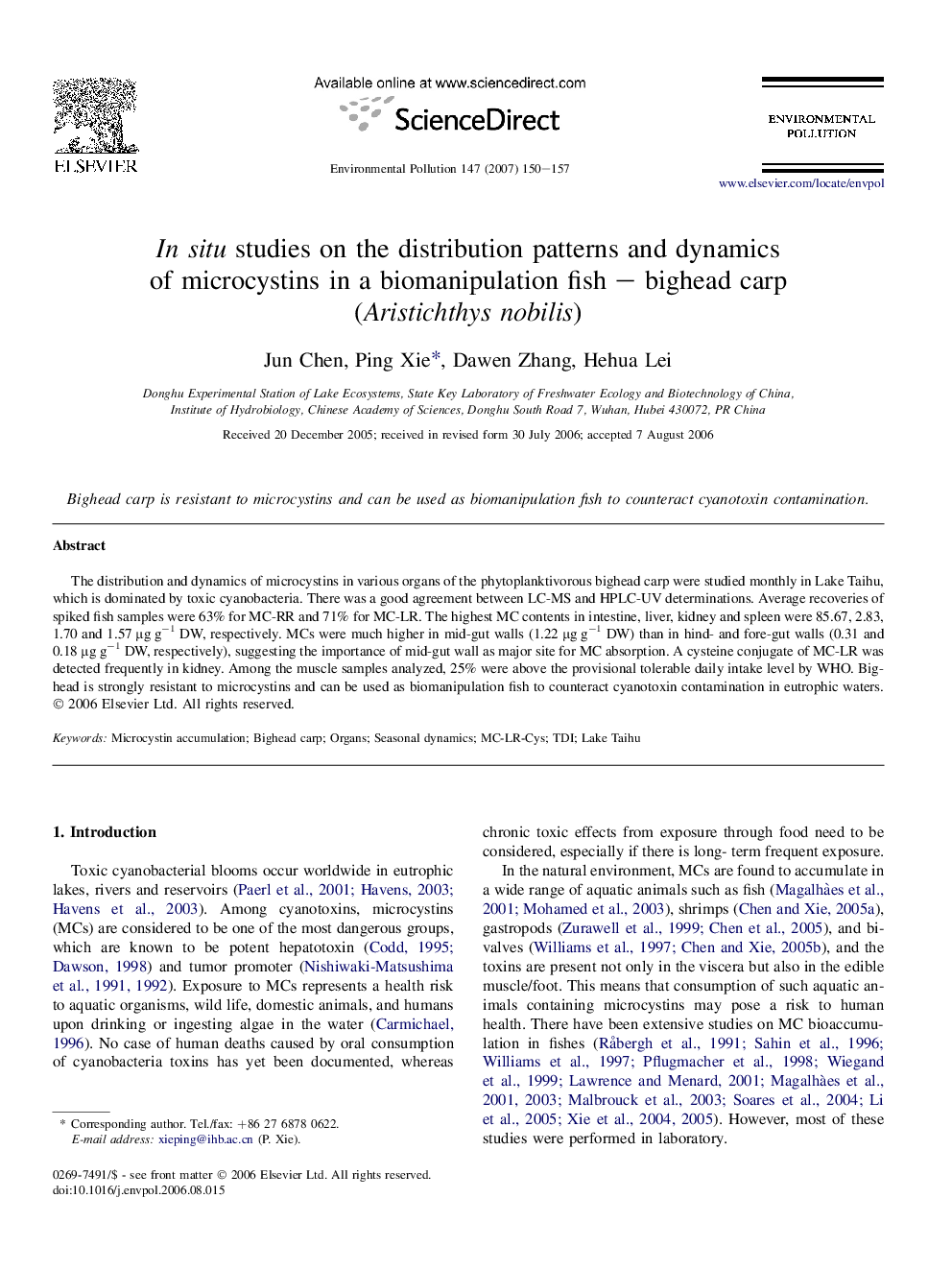| Article ID | Journal | Published Year | Pages | File Type |
|---|---|---|---|---|
| 4427076 | Environmental Pollution | 2007 | 8 Pages |
Abstract
The distribution and dynamics of microcystins in various organs of the phytoplanktivorous bighead carp were studied monthly in Lake Taihu, which is dominated by toxic cyanobacteria. There was a good agreement between LC-MS and HPLC-UV determinations. Average recoveries of spiked fish samples were 63% for MC-RR and 71% for MC-LR. The highest MC contents in intestine, liver, kidney and spleen were 85.67, 2.83, 1.70 and 1.57 μg gâ1 DW, respectively. MCs were much higher in mid-gut walls (1.22 μg gâ1 DW) than in hind- and fore-gut walls (0.31 and 0.18 μg gâ1 DW, respectively), suggesting the importance of mid-gut wall as major site for MC absorption. A cysteine conjugate of MC-LR was detected frequently in kidney. Among the muscle samples analyzed, 25% were above the provisional tolerable daily intake level by WHO. Bighead is strongly resistant to microcystins and can be used as biomanipulation fish to counteract cyanotoxin contamination in eutrophic waters.
Related Topics
Life Sciences
Environmental Science
Environmental Chemistry
Authors
Jun Chen, Ping Xie, Dawen Zhang, Hehua Lei,
